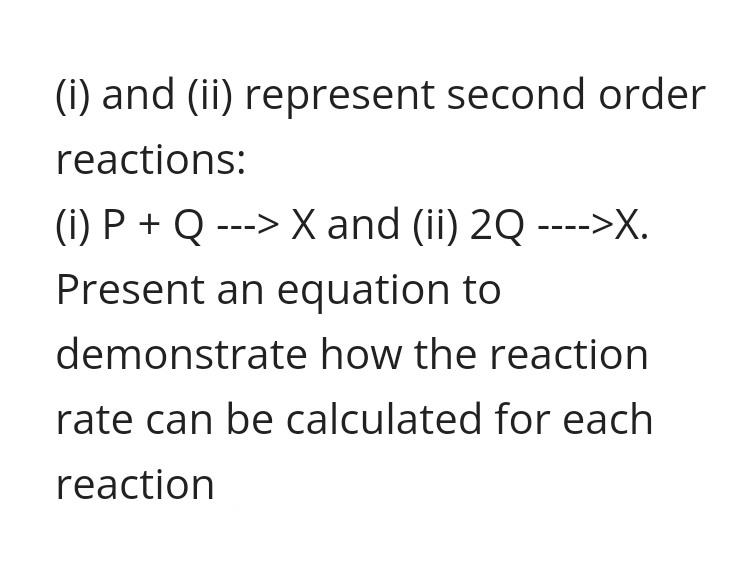(i) and (ii) represent second order reactions: (i) P + Q ---> X and (ii) 2Q ---->X. Present an equation to demonstrate how the reaction rate can be calculated for each reaction
(i) and (ii) represent second order reactions: (i) P + Q ---> X and (ii) 2Q ---->X. Present an equation to demonstrate how the reaction rate can be calculated for each reaction
Chapter30: Kinetic Methods Of Analysis
Section: Chapter Questions
Problem 30.12QAP
Related questions
Question

Transcribed Image Text:(i) and (ii) represent second order
reactions:
(i) P + Q ---> X and (ii) 2Q ---->X.
Present an equation to
demonstrate how the reaction
rate can be calculated for each
reaction
Expert Solution
This question has been solved!
Explore an expertly crafted, step-by-step solution for a thorough understanding of key concepts.
Step by step
Solved in 2 steps with 1 images

Knowledge Booster
Learn more about
Need a deep-dive on the concept behind this application? Look no further. Learn more about this topic, chemistry and related others by exploring similar questions and additional content below.Recommended textbooks for you


Principles of Modern Chemistry
Chemistry
ISBN:
9781305079113
Author:
David W. Oxtoby, H. Pat Gillis, Laurie J. Butler
Publisher:
Cengage Learning



Principles of Modern Chemistry
Chemistry
ISBN:
9781305079113
Author:
David W. Oxtoby, H. Pat Gillis, Laurie J. Butler
Publisher:
Cengage Learning
